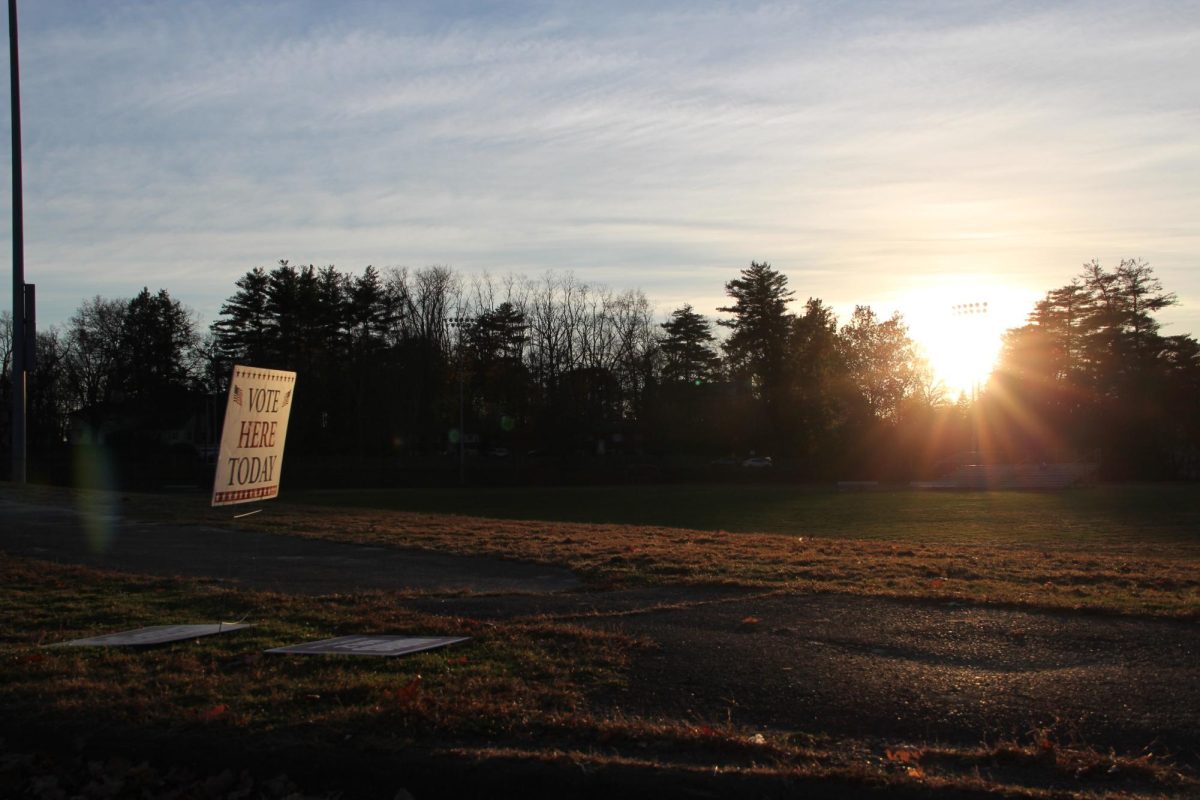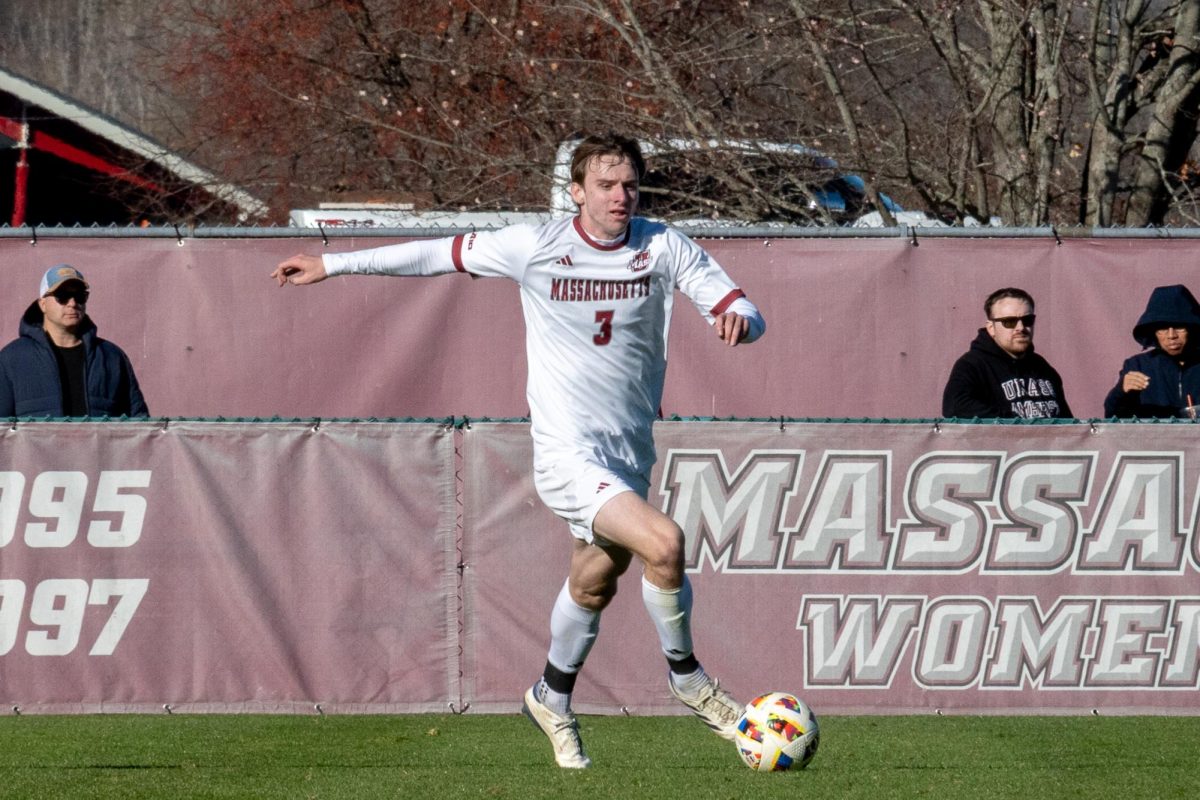Henia Lewin, a child survivor of the Holocaust, spoke at the University of Massachusetts Institute for Holocaust, Genocide and Memory Studies on Tuesday night as she shared her experiences living through the genocide.
Before Lewin spoke, there was a candle-lighting ceremony in which UMass students lit six candles. Each candle represented one million Jewish people that died in the Holocaust.
Lewin, who speaks at various events and schools, discussed her time as a child in Lithuania during the Holocaust. Born in January 1940, her family was forced to move into the Kovno Ghetto on Aug. 15, 1941.
When they lived in the ghetto, her father, who worked in the wall paint business, built a fake wall with shelves that housed a space for her to hide while he and Lewin’s mother went to work. Some of the men in the house also dug a hole in the ground as another hiding option.
“The main thing was to get a job assignment,” Lewin said. There was a “round-up of intellectuals.”
She said this consisted of 526 men who spoke different languages because the Germans needed them to translate certain documents. When they were taken, however, they never returned.
Many of Lewin’s family members were killed in these round-ups, including an uncle who was among the 526 volunteers. She remembered these round-ups always occurred on Jewish holidays.
A priest in a local seminary helped her mother for a while. When she had to leave because it was unsafe for her to remain in the ghetto, she was sedated and smuggled out of the ghetto in a suitcase.
Lewin was then given to the Stankevicius family, Christian family friends of Lewin’s family. She remained in hiding with them under a fake name for almost two years. Her parents ran away in 1944 and hid on different farms until they were reunited. Lewin’s family also adopted her cousin Shoshana, who also had been in hiding with Lewin. She was given to a different family when they had to flee the ghetto, and moved out of Lithuania. They first went to a refugee camp near Frankfurt, Germany, then moved to Israel and later moved to Montreal, Canada, so her mother could be somewhere cold because of problems with climate.
Before the war, there were 250,000 Jews in Lithuania. Out of 40,000 Jews in the Kovno ghetto, only 2,000 survived.
“Being one of them (a survivor) makes me cry,” Lewin said.
In 1995, Lewin returned to Lithuania to find the mother of the Stankevicius family that had helped to hide her years ago. She returned to all of the places that she had been to as a little girl, and paid her respects to the deceased.
Jonas Stankevicius had died 11 years prior to her return, but upon the ceremony that was held in honor of the Stankevicius family, Lewin obtained Jonas’ medal of honor to pass on to her family.
“I’d like to think that Hitler is turning over in his grave,” Lewin said. “Shoah is not just your normal genocide. The kind of things that were done to Jews in history is unique and it shouldn’t happen to anyone ever.”
The event was sponsored by UMass Hillel and the UMass Institute for Holocaust, Genocide, and Memory Studies. The exhibition inside the Institute, titled “A Reason to Remember,” was donated by the Jewish Federation of Western Massachusetts to the Institute in November 2010.
The Institute was officially opened in 2011 by Lara Curtis, the assistant director of the Institute and a PhD candidate in comparative literature at UMass, and James Young, a distinguished professor at UMass in Judaic and Near Eastern Studies, as well as English.
Curtis and Young were both involved in bringing the exhibit and establishing the Institute. Carrie Lieberthal, the engagement outreach coordinator for UMass Hillel, also helped organize the event.
“I hope this becomes a tradition,” Curtis said. “This had a very good turnout. Thousands of people have come through here since the opening in 2011. I’m hoping that an event like this brings more people. It’s good to see a high level of interest among the University students.”
Marleigh Felsenstein can be reached at [email protected].



















Christian Carlsen • May 5, 2014 at 11:46 am
Thank you so much for sharing your story. I am happy to hear about the activism of the Litvaks in the U.S.
I am working on a film projekt about the Holocaust, Jewish Resistance and commemoration politics in Lithuania. It is a portrait of the Vilna Ghetto survivor and former partisan Fania Joheles-Brancovskaya – one of the last witnesses to the Holocaust in the Baltics.
Although 91 years old she fights everyday for keeping memory alive. She guides groups to the historic sites, looks after the Yiddish Institute in Vilna and organizes help for the elderly in need.
When I asked her once for the source of her vigor she replied, she would do it on behalf of the people whose fate was being murdered by the Germans and their helpers and who can’t tell their story.
Dear Litvaks, keep going, or as Fania puts it: Zeyt gezunt un shtark!
Best wishes from Berlin